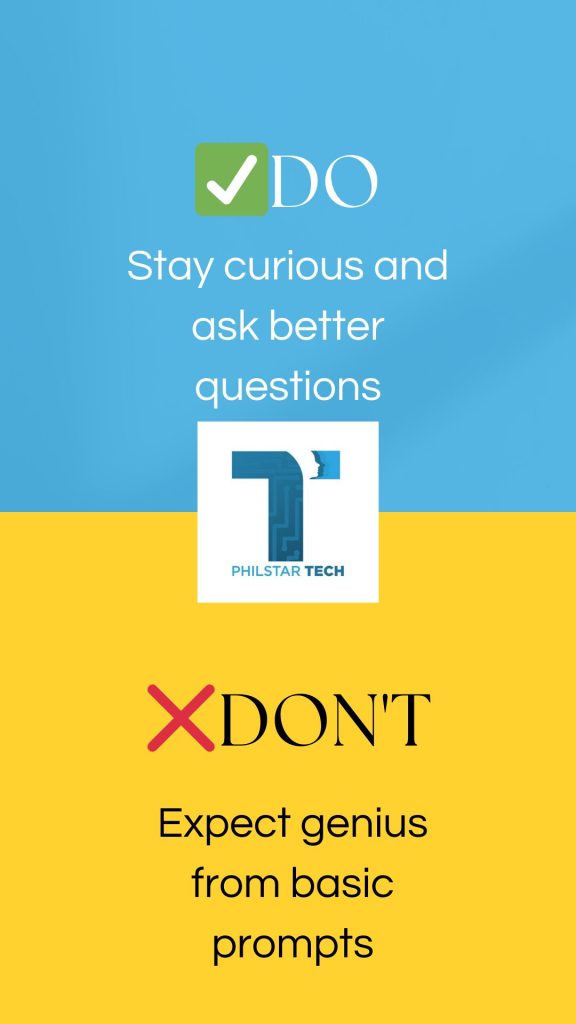After reading about China making AI education mandatory in schools, I found myself asking: okay, so they’re teaching it. But are we even using it properly?
AI isn’t new anymore. It’s everywhere.
From the voice assistant that sets your alarm to the app that recommends your next binge-watch, AI is already shaping how we live, work, and scroll. But just because it’s there doesn’t mean we always use it well.
So let’s talk about that. If you want to actually use AI responsibly (and not just copy-paste prompts into ChatGPT for funsies), here’s a guide.
No fear-mongering, no tech bro nonsense. Just a simple guide on how to approach AI ethically and smartly.
#1 – Know What You’re Using

Let’s start with the basics: understand the tool before you use it. AI isn’t magic. It’s trained on data, lots of it. Some of it good, some of it… less good. And depending on the tool, that training data can carry bias, misinformation, or outdated ideas.
When you’re using AI for writing, research, or creative work, treat the output as a starting point, not gospel truth. It’s not there to replace your brain. It’s there to support it.
#2 – Give Credit Where Credit’s Due

AI can help you brainstorm, generate art, write outlines, summarize meetings—cool. But if you’re using AI-generated content in your work (especially in professional or academic settings), be transparent about it. Credit the tool.
There’s nothing wrong with using help.
#3 – Check the Ethics, Not Just the Output

AI doesn’t think. It doesn’t care about context. So it’s your job to care.
▪️If you’re using image generators, ask: Did this output rip off someone’s original artwork?
▪️If you’re working on a chatbot, ask: Could this be used to spread misinformation?
▪️If you’re training your own model or fine-tuning something, ask: Am I sourcing this data ethically?
#4 – Respect Privacy

Don’t use AI to “check up” on people, monitor conversations, or generate deepfakes. That’s not clever. It’s creepy (and in a lot of countries, illegal).
People deserve consent and context. Using AI to manipulate, deceive, or surveil others crosses a line fast. If you’re doing something with AI that you wouldn’t proudly explain to your mom, your boss, or a random stranger at 7-Eleven, maybe… don’t do it.
#5 – Teach Kids (and Adults) How to Ask Better Questions

Here’s something schools in China are getting right: it’s not just about using AI, it’s about thinking through AI.
That means learning how to ask good prompts, interpret answers critically, and not take shortcuts that skip real understanding. This applies to adults too. Want better AI output? Ask smarter questions. Want to use AI without becoming dependent on it? Stay curious, not just efficient.
#6 – Use AI to Empower, Not Replace

AI is not here to steal your job. But it can change the way you work. Use it to take over repetitive tasks, organize chaos, or unlock creative blocks.
Great AI use feels like a collaboration, not a delegation. It still needs you, your judgment, your taste, your values. If you remove those from the equation, you’re not “working smarter.” You’re just outsourcing your voice.
#7 – Stay Informed Without the Panic

Ethical AI use is also about staying up to date. That doesn’t mean doomscrolling every AI horror story. It just means keeping tabs on where the tech is going, what laws are changing, and how the tools you use are evolving.
Subscribe to a newsletter. Read the occasional think piece. Even just being aware puts you ahead of 90% of users.
It’s Not AI vs. Humans—It’s AI with Humans
There’s a lot of noise out there. Some people want to ban AI outright. Others want to automate their entire lives with it. The sweet spot is somewhere in the middle.
Use AI. Learn AI. But also ask questions. Set boundaries. Keep your humanity in the loop.
Because at the end of the day (again), AI is just a tool. And tools reflect the hands that use them.


